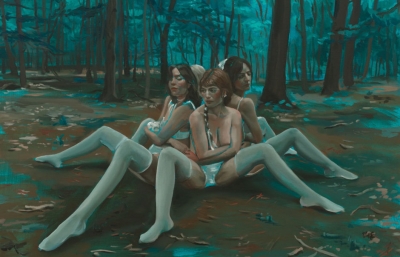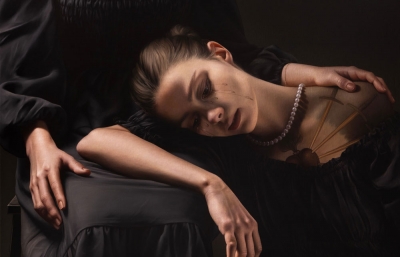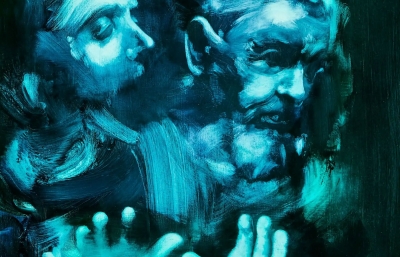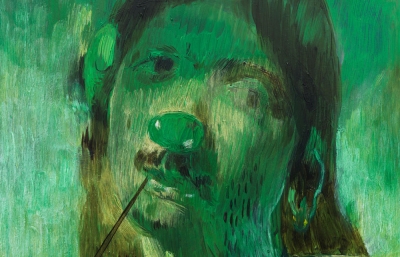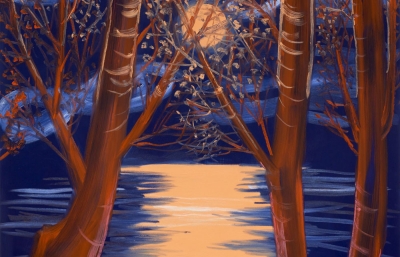Smithe
Learning and Loving Life
Interview and Portrait by Alex Nicholson
At one point during my conversation with Smithe, he insisted that he doesn’t like to give advice because he isn’t good at it, only to follow the declaration with some good, practical counsel of his own. “It is always better to do than to speak.” As the day went on, I understood these are words he clearly lives by. Between a design studio, clothing brand, gallery, playing in a band and touring the world painting murals and participating in exhibitions, Smithe is always doing something. His response also illustrates the light hearted, humble attitude with which he reacts to accomplishments and interacts with friends, fans, and collaborators.
Smithe lives, works, and paints in the historic center of Mexico City. Still fairly affordable, but quickly changing, Centro Historico is a hectic, bustling commotion of working people and crowds of tourists that, at times, rivals a busy Times Square. The Copete Cohete office, a design studio where he partners with the artist Pogo, serves as mission control for anything and everything. Clothing for Tony Delfino, the brand he started with Jesus Benitez in 2008, fills a back room where it is packaged and shipped to those not able to visit the nearby storefront. In the main office, overlooking the street below, employees are busy creating animations, illustrations, and branding for commercial clients or planning exhibitions at TOBA Gallery, the space adjacent to Tony Delfino. Smithe used to paint in the same space, but recently decided to rent a separate studio, a few blocks away, where he is hoping, once the businesses become more self-sufficient, to devote more time to his paintings and personal work.
Alex Nicholson: What are the earliest things you remember creating?
Smithe: The first things that I started drawing were replicas of Dragon Ball Z. When I was 11 or 12 years old, there was a boom of the anime in Mexico and I was drawn to the characters. Then, in school, we had this class called Technical Drawing, which basically taught you how to use rulers, squares, and pencils to draw geometric figures, blueprints or objects with their different perspectives. I really enjoyed that and still use several things that I learned from it in my drawings.
Are there other books, magazines, or movies that had a big impact?
Everything in general! I am very graphic and I like to see all the details in images, from Manga to mechanical books. One that had a big influence was an encyclopedia that my dad collected in the ’80s called Salvat Automobile Encyclopedia. It was my favorite when I was a child.
At your recommendation, I visited the magnificent murals at Palacio de Bellas down the street from your studio. Who is your favorite of the Mexican muralists?
Jorge González Camarena is my favorite. Both his technique, as well as the color palette and topics are awesome, very advanced for the year in which he was making them.
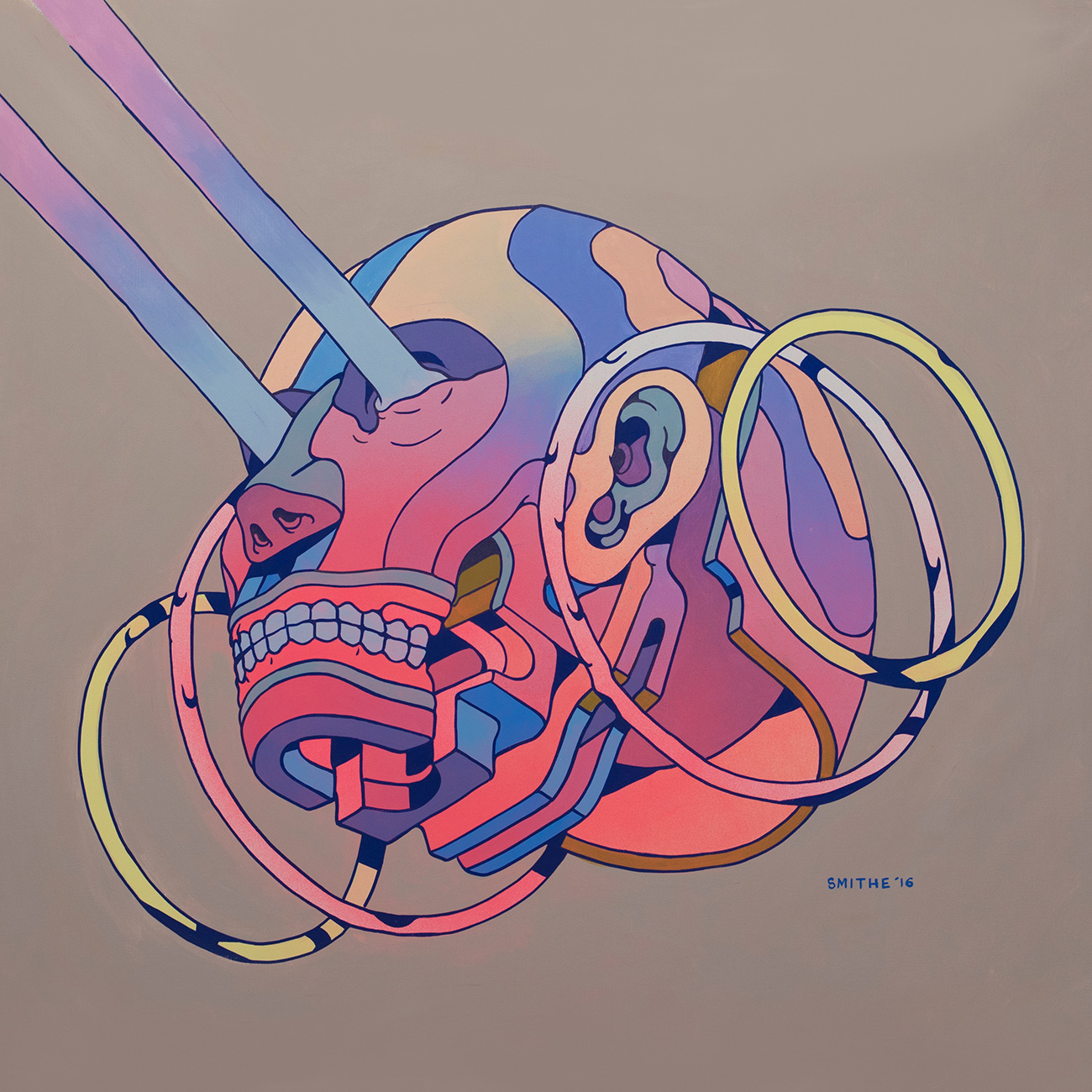
You told me your parents were always supportive, finding you things to draw with, even if they were simple. How important was that encouragement?
Yes, my parents were always very supportive, even in my graffiti stage. I got into trouble quite easily and they still helped me so I could do whatever I wanted.
When did you decide that you wanted to try and make a living as an artist?
I think it was when I obtained my first design job. It was for a Mexican skateboard brand called Aztlan, which is still around. It was my first opportunity to earn some money from my designs, and afterwards, it became clearer to me that it was possible to work in what interested me. I never envisioned doing fine art, I was always more focused on design and illustration.
Do you feel like you have to do something creative every day?
Not always. I have production or preparation stages before starting work every day. What does happen to me is that I always have to be doing something. With my studio Copete Cohete, the clothing brand Tony Delfino, my gallery TOBA, and my band Stendal, I always have something new to do that keeps me active every day. I hope in the coming years to be able to focus more on my personal work and, little by little, give myself some space from all the other responsibilities.
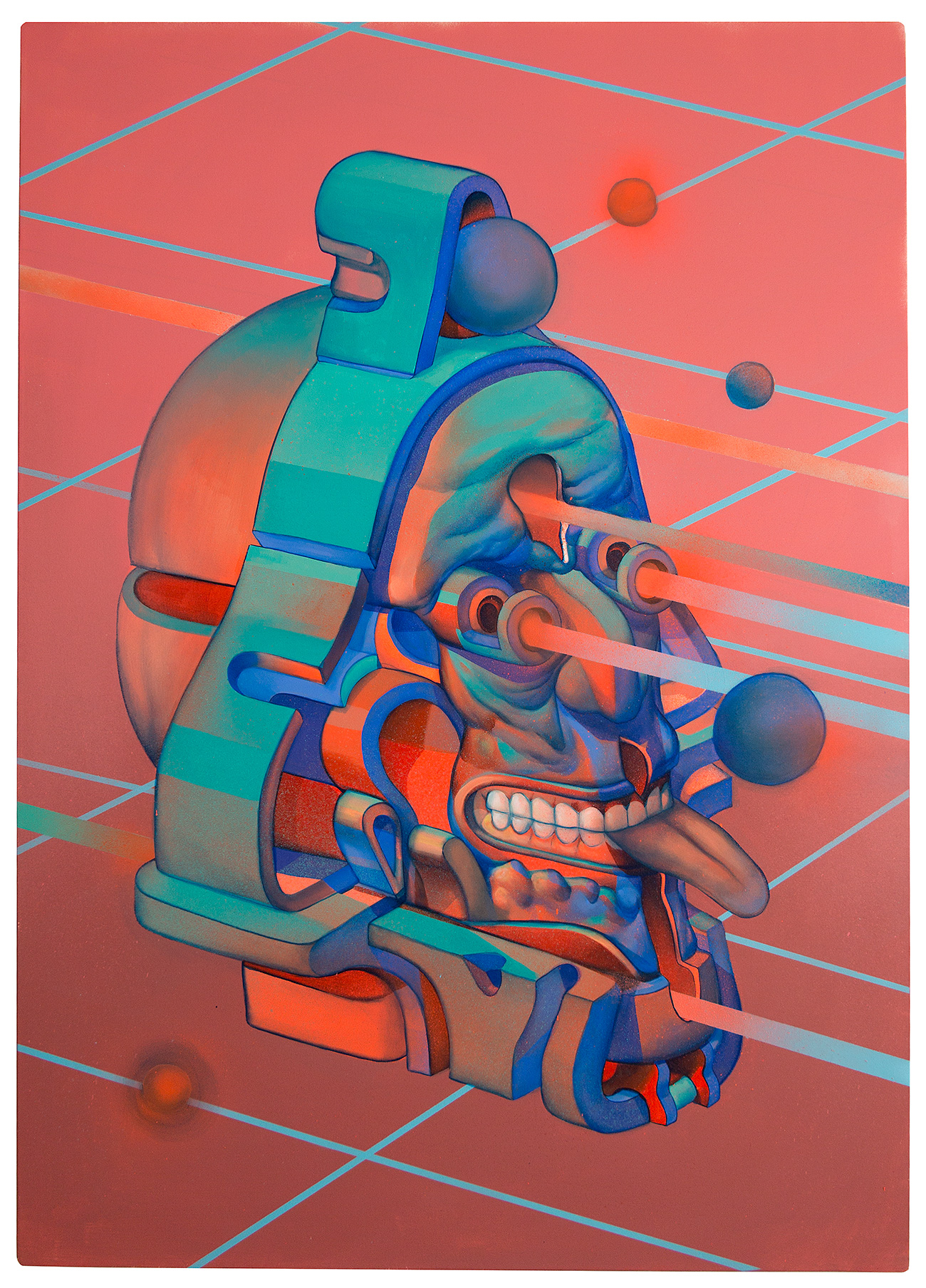
Along the way, did you ever feel discouraged or like you might not succeed?
I don’t like to think about whether I have been successful or not. I like to measure it more by the things that I have accomplished during these years and the things that have materialized and are still here. There are a lot of dead projects that never came out as I had planned, but I know there’s time to accomplish them in the future.
With so many different projects going on simultaneously, how do you stay motivated?
I try to get out of my comfort zone and look for different things to inspire me to change the way I do things. I have been stuck in what I’m doing for some time and I need to think a little bit more about my graphics, give them a different twist from what I have done in the past.
You have to make lots of quick decisions as a business owner, designer, muralist, and artist. Do you find that easy, and are you a naturally decisive person?
Yes, you have to be cold sometimes and think about the future. Running a gallery was a very tough decision that costs me a lot of time, but I’m also gaining a lot of experience. I keep on learning and like what we have done with it.
With the gallery, you are trying to create a place for local artists to show their work. You must have a lot of young artists who ask you for advice. What do you tell them?
I try to never give advice. I am so bad at it. When people do ask me what to do and how we came to where we are, what I always tell them is to never stop, to continue to produce and do stuff. The worst thing that can happen is that nobody sees it but you have already done it. It is always better to do than to speak.
Are the design studio, clothing brand and gallery things you always wanted to do, or did they just happen along the way?
Everything has happened slowly, with very calm steps. The clothing brand was for fun and to have a good time making T-shirts for our friends. We never planned for these things, they just happened. It’s the same with the gallery and illustration studio—in talks and meetings, the ideas come out and then we start acting upon them. I like the fact that I have not planned for a lot of what we have accomplished.
Earlier you mentioned the hope that now that these things are close to running on their own, you will have time to focus on your personal work. What pushes you to keep changing things up?
Yes, finally, after being torn to pieces for every project, each one is working on its own and I am happy for that. To be honest, I want to focus more on my graphics and art in general. I wish I could explore more things that I have not been able to accomplish as Smithe, and I think I have in mind what the next steps are.

Any hints?
I really want to explore my stuff on a 3D level. I want to leave flat work surfaces for a while and start putting more depth into my work.
You’ve been a part of the band Stendal for a while now. What are the differences creatively between playing music and painting?
It is very different. You have to communicate with a lot more people, not with words, but to reply with sounds. When we make or try to make music, there’s nothing written, we do live rehearsals, and it stays that way. We listen, and if we don’t like it, the four of us continue to work. It’s a process totally different from painting, another side of me that I like to keep active.
What part of the process is similar?
Maybe when you have an idea in your mind but never expect the final outcome. What I first imagine is always different from the final product.
Do you improvise a lot when you paint?
I improvise almost always. Sometimes I will plan things if a piece is commissioned, but, for the most part, there are no sketches. Lately, I have been wanting to change that and dedicate more time to planning the construction of my work and see how far it can go.
What is the most rewarding part of the creative process?
Seeing how an idea is born from scratch. The process is what I enjoy most, more than seeing them finished. For example, sometimes a small change in color will change the attitude of everything that you have done, and I like that, never knowing what the final plan is and being surprised along the way.
You have focused on mental disorders, inner demons and other psychological states in your work. What has inspired that focus on the mind and brain?
I think that painting is my therapy and, as a result, I show what I am feeling in my work. I do not do any mental exercises or anything like that. When I am drawing and painting is when I have time to think about me and what I want to do in the future. Unintentionally, I think that is reflected in the work.
Does believing you have something to say and something that people should see mean attaining a certain level of confidence? How do you see the relationship between the ego and the artist?
The ego is something to be respected. I think that, in the end, we are all humans and we are all equal, but we all have different capacities. The ego sometimes can help and support an idea, but it can also sink if you don’t know how to handle it. I don’t like to speak a lot about the ego in my work.
Are there specific things you want to communicate in your work, or do you prefer it when people come up with their own interpretations?
What I like to know is that it makes them think, for them to wonder as to why or how I did it, because it’s always fun when they tell you about their own interpretations. Sometimes it surprises me how each one of them reads what I do. I think that’s what I look for; that for a moment, they forget what they have on their minds and wonder.
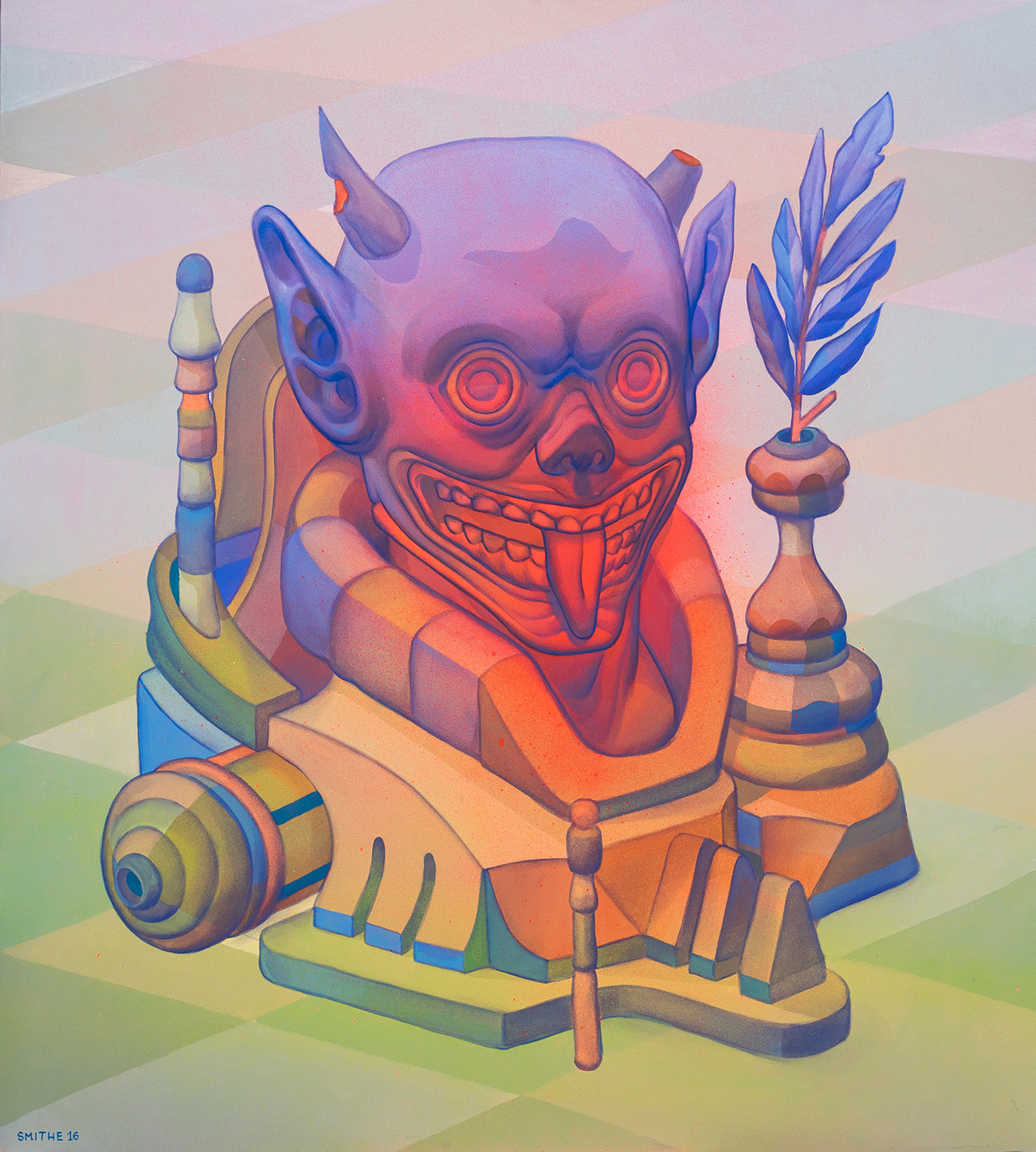
Collaboration is a big part of many mural projects, and you are constantly surrounded by others in the office. How important is it for you to have a good community of other creative people around?
I don’t know, I love working with a lot of people. That’s my way of working, to always be surrounded by creative people and do things together. I can’t imagine being alone working in my studio. It wouldn’t be me. I think I would be bored by now and end up doing something else, ha ha.
Obviously there is the scale, but how else does your creative process differ from working on a painting in the studio and working on a mural?
They are totally two different worlds. One is super hermetic and personal, while, with the other one, you have to adapt to the environment, the people, the space, and even the weather to accomplish the mission. I have been in many different situations, and painting outside always varies so much. Each wall is different. Painting in the studio is much more controlled and you set your own limits for how much time you want to spend on a piece. When you are painting at festivals with large walls, time is always very tight to complete the work. I am already tired with that and I think I will be leaving that a bit.
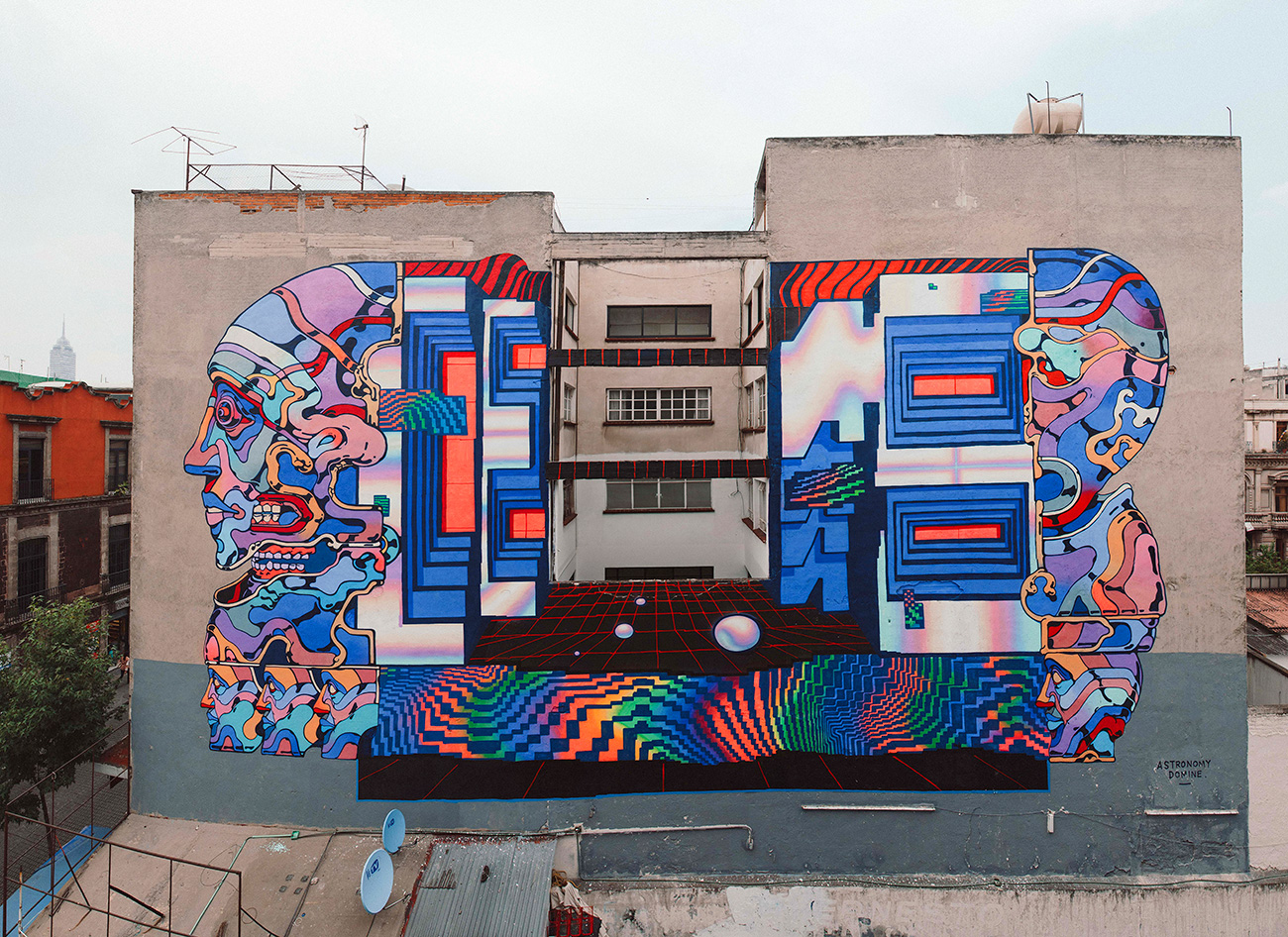
Mexico City has a long and influential artistic history. What do you think it is about the city that attracts creative people and inspires artists?
I think that a city is always full of information, movement, noise, and people. At this time, Mexico City is having a moment where it is growing in a creative way. Distrito Federal (Greater Mexico City) has a lot of history and it is very cheap to live and have a studio, in comparison to other big cities. The artistic scene is growing and that makes me happy.
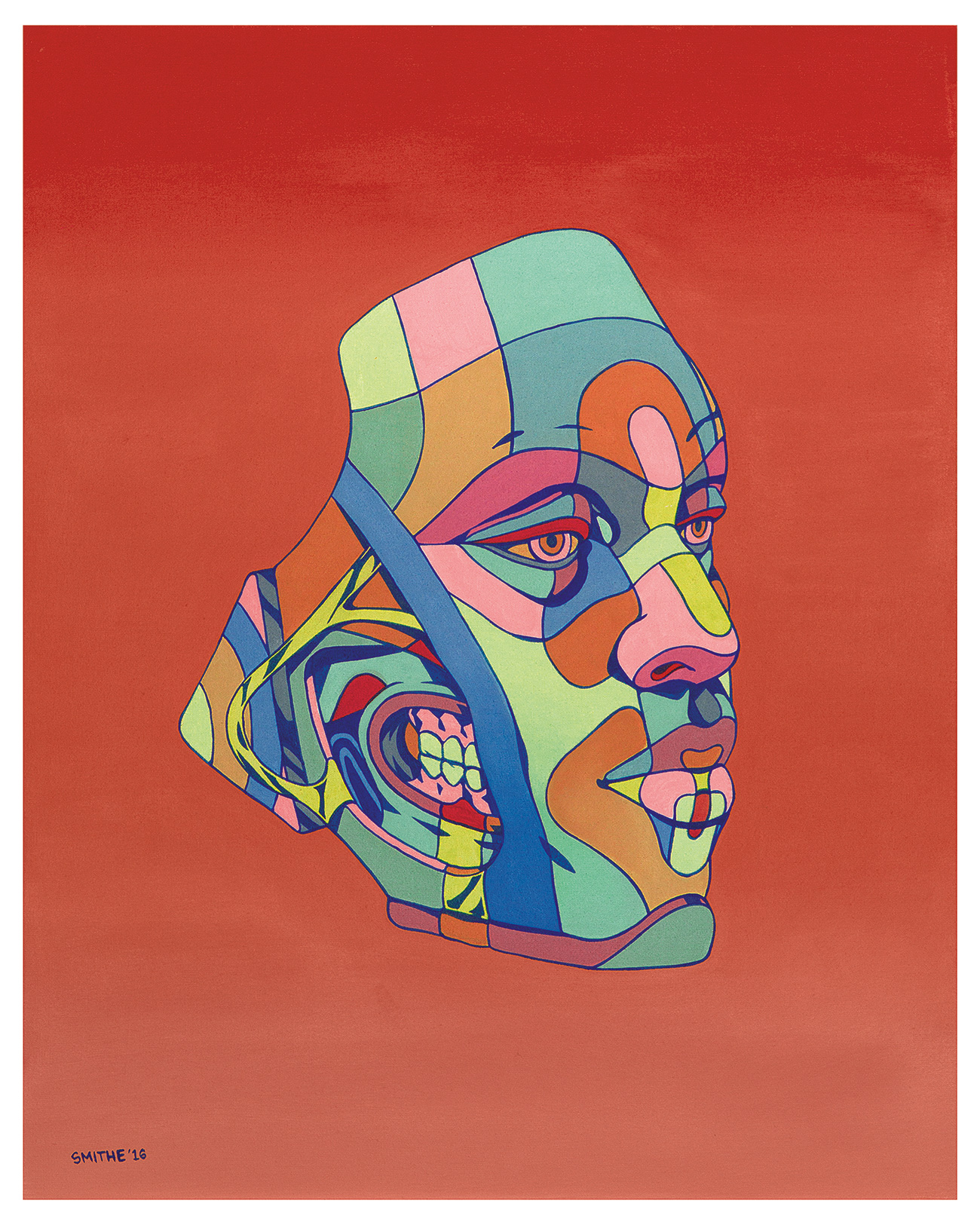
What do you love most about the city as an artist, and what do you dislike?
I have always loved my city. Since I was a kid, I have been very influenced by wandering the streets and getting lost. By having my studio in the heart of the city, I get that too. I think what I have a hard time with is how to handle the massive amount of people and cars, the total chaos. You would not want to ride your bike across town. It is a real problem
It’s been a few months since the devastating earthquake. Is there discouragement and fear about the future, or are you encouraged by everyone coming together to help in the healing and rebuilding?
Like any natural disaster, it took us aback, but for a moment, we realized what we were really capable of. Being able to take care of each other, seeing how people helped others without expecting the government's support. I'm still amazed by this. Mexicans have the notion in our culture to help in the worst scenarios and we demonstrated this on the 19th of September, 2017.
smitheone.tumblr.com

